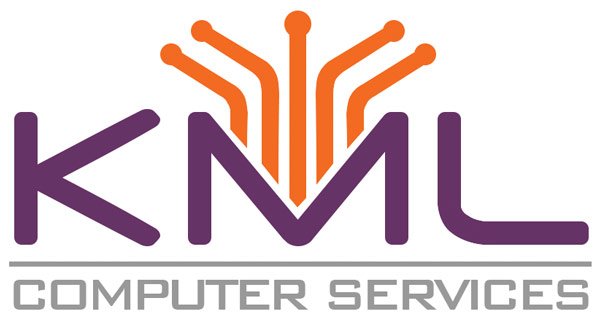
A reliable IT infrastructure is vital for business success in today’s fast-paced and competitive digital landscape. Organizations must choose between two primary IT management approaches—the Reactive Model and the Proactive Model.
This framework offers a strategic guide to understanding these models, outlining their benefits and limitations, so you can make an informed decision that aligns with your business goals and positions your organization for future growth.
What is Reactive Service (AKA Break/Fix)?
Reactive service, also known as the Break/Fix model, is a traditional approach to IT support where businesses only call on service providers when something goes wrong. Whether it’s a hardware failure, software crash, virus infection, or user error, the provider steps in to diagnose, address, and resolve the issue on an as-needed basis. The service is typically billed per incident, covering both labor and any required parts.
While this on-demand setup may seem cost-effective at first, it often proves to be inefficient and unpredictable in the long run. Businesses face sudden, unplanned expenses whenever issues arise, making budgeting difficult. Additionally, there are significant drawbacks to this approach that can impact operations, productivity, and even security.
Key Challenges of Reactive Services:
- DIY Fixes: Employees often attempt to resolve issues themselves, risking temporary fixes that address the symptom but leave the root cause untouched, leading to recurring problems.
- Escalating Issues: Small, unresolved problems can quickly snowball into bigger, more disruptive issues, potentially leading to extensive downtime across the business.
- Delayed Response: Support is only initiated after approval and scheduling, which can lead to delays in resolving critical problems. Response times depend heavily on the provider’s availability.
- Security Risks: If the issue involves a cybersecurity threat, delays in resolution can expose the organization to significant risks, including data breaches or ransomware attacks.
What is Proactive Service (AKA Managed Services)?
Proactive service, also known as Managed Services, offers a stark contrast by taking a preventative, proactive approach to IT management. Here, a Managed Service Provider (MSP) continuously monitors, manages, and maintains a company’s entire IT infrastructure. This includes hardware, software, networks, and cybersecurity measures.
Instead of waiting for something to break, MSPs focus on identifying and addressing potential issues before they result in downtime or disruptions. Routine maintenance, real-time system monitoring, and automated updates ensure smoother and more efficient operations.
Advantages of Proactive Services:
- Cost Predictability: With a flat monthly fee, businesses can budget for IT expenses more effectively, avoiding the surprise costs typical of the reactive model.
- Minimized Downtime: Continuous monitoring means vulnerabilities and inefficiencies are addressed proactively, reducing the likelihood of major outages.
- Enhanced Security: MSPs deploy robust cybersecurity strategies to prevent cyberattacks, keeping sensitive data and operations well-protected.
- Optimized Productivity: By ensuring systems run efficiently and minimizing disruptions, employees can stay focused on their work without unnecessary interruptions.
Ultimately, while reactive services may suffice in the short term, managed services provide a long-term solution designed for stability, reliability, and cost savings. (MSPs) address potential vulnerabilities early, ensuring smooth operations and minimizing downtime. Partnering with an MSP means investing in a future where your IT infrastructure works for you—not against you.
Key Differences Between Reactive and Managed Services
Reactive Model (Break/Fix)
- Reactive Approach: This model operates on a break/fix basis, where service providers address issues only when something goes wrong. Support is reactive and provided on demand.
- Best for Small, Low-Impact Needs: Suitable for businesses with minimal IT infrastructure or occasional issues, the Reactive model may keep upfront costs low. However, the trade-offs include potential downtime, lost productivity due to delays, and significant risks if the issue involves cybersecurity. Even a single delayed response to a security threat can have costly consequences.
- No Preventative Care: Without routine monitoring, small issues can escalate into major disruptions or expensive fixes before they’re even identified.
- Unpredictable Billing: Costs are incurred only during emergencies, leading to unpredictable and often higher expenses when downtime or critical failures occur.
Managed Services Model
- Proactive Approach: Managed Services take a forward-looking stance with 24/7 monitoring, routine maintenance, and preventative care to mitigate issues before they arise.
- Ideal for Growing or Complex Environments: Designed for businesses with ongoing IT needs or plans to scale, Managed Services provide stability, security, and fewer interruptions.
- Focus on Optimization: Managed Service Providers (MSPs) not only maintain IT systems but also enhance infrastructure, improve security, and align IT strategies with long-term business goals.
- Predictable Costs with Greater Value: The subscription-based pricing model of Managed Services allows businesses to budget effectively while receiving proactive support and reducing downtime expenses.
Categories of Managed Service Models
The MSP model ensures cost predictability by offering a defined set of services for a consistent fee. Typical offerings include monitoring, maintenance, cybersecurity, and support—streamlining budgeting, enhancing cost predictability, and ensuring businesses have full control over their IT expenses while keeping their technology well-maintained. Many models are all-inclusive for helpdesk type issues and only charge additional fees when there is a project involved (rebuild server, new equipment, etc.). For managed services, there are two different types based on your organization’s needs, co-managed IT and fully managed IT services.
Co-Managed IT Services
This model offers supplemental support by partnering MSPs with internal IT teams. It’s an excellent choice for organizations with in-house staff seeking additional expertise, resources for specific projects, or coverage during peak workloads. Routine tasks can also be offloaded, enabling internal teams to focus on high-priority initiatives.
Fully Managed IT Services
For organizations without internal IT teams—or those wanting to outsource completely—fully managed services provide end-to-end IT management. The MSP takes full responsibility for daily operations, projects, troubleshooting, and strategic planning, ensuring a fully optimized IT environment.
Benefits of Managed Services
Managed Services deliver distinct advantages compared to the traditional Break/Fix model, including:
- Improved Service Quality: Proactive maintenance and monitoring minimize downtime and prevent disruptions.
- Cost Efficiency: Fixed subscription pricing reduces financial uncertainty, often leading to lower overall IT costs over time.
- Enhanced Business Operations: By streamlining IT management, businesses can focus on core goals without being derailed by tech issues.
- Decreased Downtime: Proactive monitoring and fast response times reduce vulnerabilities and operational interruptions.
- Cybersecurity Protection: MSP’s are not MSSP’s (Managed Security Services Provider) but can help smaller businesses with the basic cybersecurity tools and advice. This keeps your data and your business less prone to risks of ransomware and data breaches with reasonable associated costs.
- Resource Optimization: MSPs provide expertise and support to businesses with limited internal IT resources, filling gaps in skills and capacity.
Managed IT Service Offerings
The scope of managed IT services can vary based on business needs. Common offerings include:
- Monitoring and Maintenance: Continuous oversight of IT systems to ensure consistent performance.
- IT Systems Management: Comprehensive management of infrastructure, including optimized resource allocation.
- Remote Monitoring and Management (RMM): Real-time monitoring to keep networks and servers operating efficiently.
- Cloud-Based Services: Flexible delivery of infrastructure, platforms, and applications tailored to specific needs.
- Proactive Maintenance: Preventative actions like patch management and analytics to avoid disruptions.
- Support Services: 24/7 technical support and proactive problem resolution for continuity and efficiency.
Choosing the Right Managed Service Provider
Selecting the right MSP is critical to maximizing the benefits of managed services. Consider these factors when evaluating providers:
- Proven Track Record: Look for an MSP with a history of delivering reliable and high-quality services.
- Efficient Service System: A structured system for managing incidents, assigning the right technicians, and keeping you informed ensures seamless operations.
- Expertise and Experience: Ensure the MSP has expertise in managing your specific IT environment and needs.
- Service Level Agreement (SLA): Review their SLA to ensure it aligns with your organizational priorities and expectations.
- Return on Investment (ROI): Go beyond upfront costs to assess long-term ROI. Consider how downtime prevention, security improvements, and ongoing support contribute to value.
By transitioning to Managed Services, businesses can shift from unpredictable fixes to a stable, optimized, and cost-effective IT environment—enabling growth and success in a tech-driven world.
Transitioning from Reactive to Managed IT Services
Shifting from a reactive IT model to Managed IT Services has never been easier, thanks to the expertise and efficiency of Managed Service Providers (MSPs). These professionals specialize in making the transition smooth, ensuring minimal disruption to your daily operations.
The process begins with a comprehensive assessment of your existing IT environment. MSPs carefully identify vulnerabilities, potential risks, and inefficiencies. Armed with this insight, they implement proactive monitoring tools, establish a robust maintenance schedule, and design a customized service plan tailored to your organization’s specific needs.
What sets this transition apart is its seamless nature. Most of the work happens behind the scenes, allowing your team to stay focused and productive. The result? Enhanced IT performance, reduced downtime, and greater cost predictability—all delivered almost instantly.
Summary
With a Managed Service Provider handling your IT, you gain not just a service, but a partnership dedicated to optimizing your technology infrastructure and positioning your business for long-term success.
Take the First Step Toward Reliable IT Solutions!
Ready to future-proof and protect your technology? Ditch the unpredictable costs and problem resolution time of reactive service and switch to proactive Managed Services with KML Computer Services.
Contact us today for a free consultation!
Mark Rossi is president of KML Computer Services. Since 1996 he has been immersed in the technology field, working in various positions, from hardware technician and network manager to network engineer and IT consultant.

